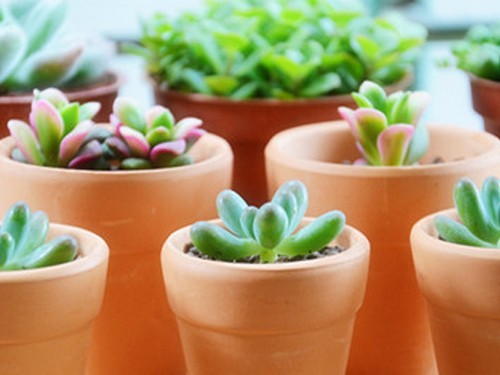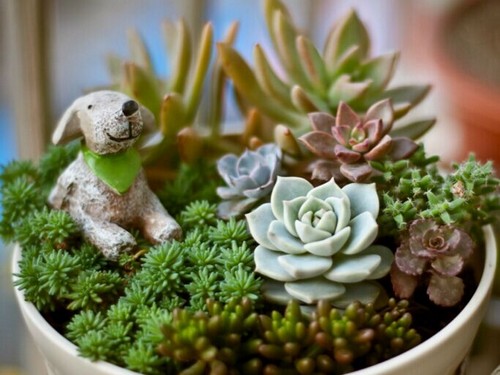How to trim the root of succulent plants the methods and techniques of topdressing succulent plants
It is not common for succulent plants to lack fertilizer, but it is common for succulent plants to burn roots. As mentioned earlier, the root osmotic pressure of succulent plants is mainly aimed at excessive fertilization, and the result of excessive fertilization is often easy to cause rot at a time. However, in order to make succulent plants grow more beautiful and relatively fast (which will have a great sense of achievement), fertilization is a very important link, and it is necessary to develop well on the basis of being able to feed succulent plants.
However, starting from the conservative principle, it is better not to fertilize succulent plants for the first time. Because succulent plants are not very fat-eating, the trace elements in the general soil can also be dealt with. Fertilization is often based on liquid fertilizer, which has the same side effects as improper watering. The main reason is that raising succulent plants is most prone to the mentality of pulling out seedlings to encourage and eager for success. After all, succulent plants have their unique physiological characteristics, although we can change the local environment to a certain extent to improve their growth rate, but we can not fundamentally change them, otherwise they are bound to fail.

In addition to the base fertilizer, succulent plants can also be considered to apply topdressing at the right time, the situation here is relatively complicated, because it is said that they are all cactus plants, in fact, there is a big difference between different varieties, because the characteristics of the varieties are different, not to mention that succulent plants belong to different families and generations. although they all have the characteristics of drought tolerance, they are still very different, and they should be treated differently and fertilized cautiously. For some species with strong growth, such as cactus, cactus, mastoid, strong thorn and so on, there will be no problem as long as they follow the principle of "thin fertilizer and frequent application" in the growing season.
For some varieties that grow very slowly, such as Peony, Imperial Crown and Flower Cage, as well as succulent plants of Stone Flower, it is better to water less or not. That is to say, fertilization, like watering, should be adapted to the growth rate of these varieties themselves. The less watering varieties are needed, the less fertilizer can be applied. However, some succulent plants in the process of raising, increase the temperature difference, promote growth, but also often apply some quick-acting fertilizer, the effect is remarkable. Therefore, fertilization must be adjusted according to the growth of succulent plants, which can play a virtuous circle.
In addition, there is a situation where fertilizer should be applied, that is, when succulent plants bloom.
Plants need to consume a lot of nutrients to blossom and bear fruit, not just the phosphate fertilizer we mentioned earlier. The flowering and fruiting of a plant is an important life cycle, so at this time, all the tissues of the plant will cooperate with this important action of breeding offspring, including: the stem will be thickened to prevent the flowers and fruits from overweight and lodging. The roots will grasp deeper and help absorb more nutrients. Some plants shed their leaves properly so as not to block insect pollination and fruit lighting.
- Prev

How to raise succulent plants the methods and techniques of topdressing succulent plants
It is not common for succulent plants to lack fertilizer, but it is common for succulent plants to burn roots. As mentioned earlier, the root osmotic pressure of succulent plants is mainly aimed at excessive fertilization, and the result of excessive fertilization is often easy to cause rot at a time. But in order to make more
- Next

How to fertilize succulent plants the method of cutting propagation of succulent plants
Many friends asked, how to fertilize succulent plants? How to match the soil when changing the basin. In fact, succulent plants themselves do not need much fertilizer. So if you want to apply fertilizer, what should be done? the following summary is hoped to be useful to everyone: 1. Potash fertilizer is very important.
Related
- Wuhan Hospital Iron Tree Blooming Result Was Instantly Frightened by the Gardener Master
- Which variety of camellia is the most fragrant and best? Which one do you like best?
- What is the small blue coat, the breeding methods and matters needing attention of the succulent plant
- Dormancy time and maintenance management of succulent plants during dormancy
- Minas succulent how to raise, Minas succulent plant pictures
- What are the varieties of winter succulent plants
- How to raise succulent plants in twelve rolls? let's take a look at some experience of breeding twelve rolls.
- Attention should be paid to water control for succulent plants during dormant period (winter and summer)
- Watering experience of twelve rolls of succulent plants
- Techniques for fertilizing succulent plants. An article will let you know how to fertilize succulent plants.

